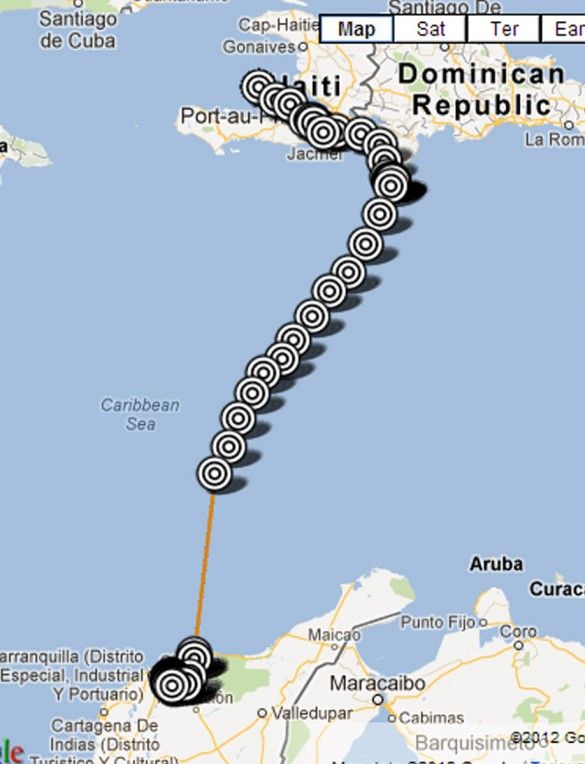Two Years In The Life Of Coley, Jamaica Bay Wildlife’s Refuge Osprey

As part of a two-year research project, scientists at the Jamaica Bay Wildlife Refuge outfitted a male osprey named Coley with a GPS device in order to follow him on his hunting trips during the summer and his migration down south in the winter. What culminated in the first year is an eye-opening discovery in the life of Coley, the Osprey.
The satellite tracker – you can see Coley being fitted with the device here, in a series of videos – will allow scientists to follow Coley’s hunting trips and his yearly migrations to the Caribbean or South America. The solar-powered pack weighs one ounce and provides the ability to collect data on the bird’s location, speed and “directionality.”
During the summer, Coley spent his time in Jamaica Bay, incubating his eggs, raising his offspring and hunting fish for them in the waters nearby. This information was on-hand from previous observations of other birds at the refuge.
However, during the migration months, scientists had little to no knowledge of the osprey lifestyle. Tracking Coley has shown scientists several intriguing aspects of the osprey’s life.
Here are some highlights:
Coley has set the stage for a picture perfect migration, departing Jamaica Bay on Monday at about 9:40 a.m. on September 10, and reaching a point 50 miles south southeast of Orlando, Florida by 7 p.m. on September 13. Over 1,000 miles in four days!
Coley has made it from Jamaica Bay to Cuba, over 1,350 miles, in just six days of flying. He flew the last 80 or so miles in the dark over the Straits of Florida, hitting land about 30 miles east of Havana. By late Sunday night he had settled in central Cuba, about 100 miles further east, after a fairly short day of migration.
Has Coley reached his wintering home [in Colombia]? Whenever an Osprey stops in one place for more than a day or two during migration, we begin to think that he has reached his wintering home. Since he has been on the west side of the Ciénaga Grande de Santa Marta or more accurately in the Ciénaga Pajaral (or loosely translated as the Bird Marsh) for the last five days, there is a good chance that he has. He could also be resting and recuperating from his more than 2,600 miles of travels since he left home on September 10th.
Dr. Bob Kennedy, who is the voice of the osprey journey, and other researchers involved hope this project will encourage us to “become more aware of the nature that can be found outside of our windows, even in the most densely populated city in the country.”
As for Coley, we’ll have to wait and see how he makes it back to his home at the refuge.




